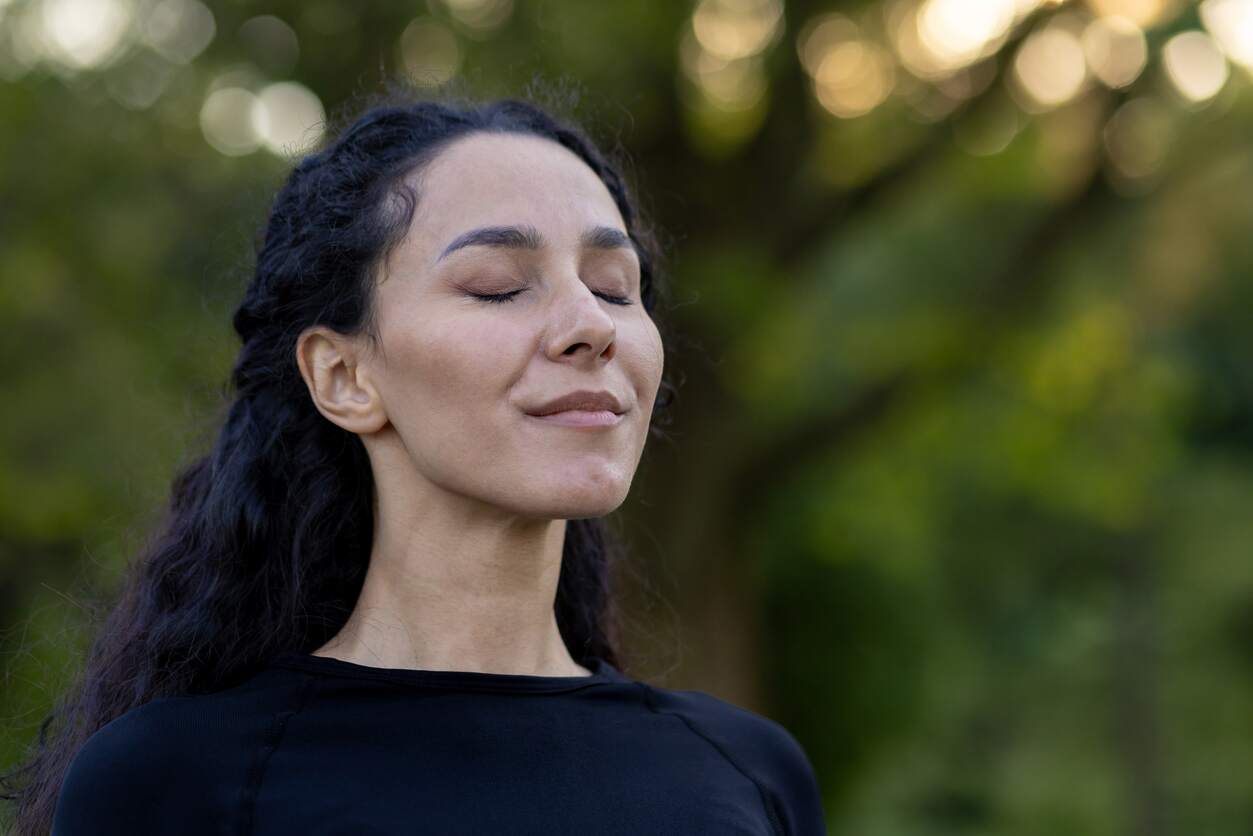Anxiety and Mindfulness
Anxiety can look and feel different from one person to the next. However, for all types of anxiety, your thoughts and feelings take you out of the present moment and into worries and fears about the future. You might not know what to do in those moments, but there are tools that can help you.
Mindfulness practices are based in Buddhism and have been around for thousands of years. Mindfulness can improve your ability to be aware of your thoughts and can help you feel more intentional in your day-to-day life. Instead of feeling overly attached to worries or avoiding them, you can make space for your feelings without judgment.
You may have heard of mindfulness before, but perhaps you are unsure exactly how it can help you with your anxiety. Maybe you have tried to be more “mindful” but want to know what specific skills to practice. Or perhaps you’ve tried other ways of managing your anxiety and want to learn how mindfulness strategies can add to your tools.
Mindfulness practice can have positive effects on anxiety and mental health when practiced repeatedly and consistently over time. However, mindfulness exercises can also offer short-term benefit. (For more on mindfulness and how it can help with anxiety disorders, see our main mindfulness page.)
If you’re interested in learning about mindfulness techniques for anxiety, read on for four of the best strategies! Give them each a try and see which work best for you.
1. Grounding
Grounding techniques are a way to bring your mind out of future worries and into the present moment. By becoming more aware of your surroundings, you can redirect your attention away from anxious thoughts to your senses.
There are two popular versions of this exercise. The 5-4-3-2-1 technique is great if you want to connect with all your senses. The 3-3-3- technique is best if you have less time but still want to ground in the moment.
5-4-3-2-1 Grounding
- Acknowledge five things you see around you. These can be small things, such as a pencil, a spot on the ground, etc.
- Acknowledge four things you can touch around you. This could be the scratchiness of a sweater, the smoothness of a rock, or the texture of something else within reach.
- Acknowledge three things you can hear. Take a moment to close your eyes and listen for things in your environment.
- Acknowledge two things you can smell. This might involve holding an item up to your nose and noticing what it smells like. Can you describe it?
- Acknowledge one thing you can taste. What does your mouth taste like? Can you take a bite of food and notice what it tastes like?
The 3-3-3 Technique
- Name three things you can see.
- Name three things you can hear.
- Move three parts of your body.
2. Body Scan Meditation
A body scan is a type of mindfulness practice that tunes you in to your body. It helps you notice different sensations, pains, and tensions in your body. Body scans help you notice sensations without judging certain thoughts or feelings that arise during the practice.
Body scans can help reduce tension, reduce anxiety and improve awareness of how your body holds onto stress.
Here is an example of a body scan:
- Lie in a comfortable position with your palms facing up or sit in a chair with your feet on the floor.
- Begin by taking a few deep breaths, in through your nose and out through your mouth.
- Bring your awareness to feelings in your head. For a few moments, notice whether you feel tension, pain, or other sensations.
- Bring your awareness to the sensations in your face. Take a few moments to notice any tension, pain, or other sensations. Don’t judge these sensations, but just bring your awareness to them.
- Bring your awareness to the sensations in your neck and shoulders. Take a few moments to notice any tension, pain, or other sensations. Don’t judge these sensations, but just bring your awareness to them.
- Bring your awareness to the sensations in your chest and abdomen. Take a few moments to notice any tension, pain, or other sensations. Don’t judge these sensations, but just bring your awareness to them.
- Bring your awareness to the sensations in your lower back. Take a few moments to notice any tension, pain, or other sensations. Don’t judge these sensations, but just bring your awareness to them.
- Bring your awareness to the sensations in your thighs. Take a few moments to notice any tension, pain, or other sensations. Don’t judge these sensations, but just bring your awareness to them.
- Bring your awareness to the sensations in your calves. Take a few moments to notice any tension, pain, or other sensations. Try to let go of judgments about these sensations.
- Lastly, bring your awareness to the sensations in your feet. Take a few moments to notice any tension, pain, or other sensations. Don’t judge these sensations, but just bring your awareness to them.
- Take a few more mindful breaths before finishing your body scan meditation.
You can also follow along with guided body scans, like these two:

3. Mindful Inquiry
When you struggle with anxiety, you might have trouble dealing with uncertainty – not knowing what will happen. Mindful inquiry is all about being curious.
When you want to tune-in to a thought, feeling, or experience, you can practice mindful inquiry to notice your observations. Rather than getting lost in a spiral of thoughts, you can focus on connecting to the moment with curiosity.
The “Breathing Space” exercise is a great way to practice mindful inquiry. It is similar to the STOP skill in Dialectical Behavior Therapy. It works by helping you engage with your inner experience with curiosity and openness.
Breathing Space
S: Stop and interrupt your “automatic pilot” by concentrating on the present moment.
T: Take a breath and bring your focus to the experience of the in-breath and the out-breath.
O: Open to observation. Connect to the experience of this moment and inquire with a sense of curiosity:
What am I seeing?
What am I feeling?
What am I hearing?
What am I smelling?
What am I thinking?
P: Proceed and re-engage with your surroundings and with your activity in the moment.
Through mindful inquiry, you can become curious without attaching a story or narrative to your experience. This practice of mindfulness cultivates a greater sense of awareness.
4. Guided Meditations
Guided meditations are a great way to cultivate awareness and acceptance of emotions. Often, when you try to push away or fight your anxiety, you can make these emotions stronger. Meditations can help you take a step back from anxious thoughts and feelings. They encourage you to observe your experiences and cultivate kindness toward yourself.
There are many different types of guided meditations. We’ve included two examples of guided meditations for anxiety – give them a try!
10-Minute Meditation for Anxiety
10-Minute Mindfulness for Overthinking
Summary
However you experience your anxiety, mindfulness techniques can help you feel rooted in the present moment. They can help you create space for worries without analyzing or judging thoughts. Give these skills a try and find your favorite mindfulness techniques to cope with anxiety!
Subscribe to the Manhattan Center for Cognitive-Behavioral Therapy blog!









